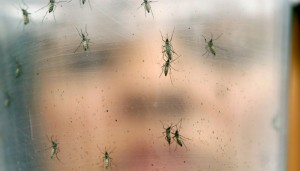Zika epidemic likely to ‘burn itself out’ in ‘three years’
According to a new study, Zika epidemic in Latin America is likely to “burn itself out” within three years.
The Imperial College London findings also concluded that the epidemic cannot be contained with existing control measures. The team predicted the next large-scale epidemic is unlikely to emerge for at least another ten years – although there is a possibility of smaller outbreaks in this time.
Lead author Neil Ferguson explained, “This study uses all available data to provide an understanding of how the disease will unfold – and allows us to gauge the threat in the imminent future. Our analysis suggests that Zika spread is not containable, but that the epidemic will burn itself out within 2-3 years.”
In the study, Ferguson and colleagues from the Medical Research Council Centre for Outbreak Analysis and Modelling at Imperial, collated all existing data for Zika transmission across Latin America. The team then used this information, alongside data on similar viruses such as dengue, to build a mathematical model to represent the current epidemic, and future waves of transmission.
Using this model, the team calculated the current epidemic would end within two to three years, due to the fact people are unlikely to be infected with Zika twice.
Ferguson explained: “The current explosive epidemic will burn itself out due to a phenomenon called herd immunity. Because the virus is unable to infect the same person twice – thanks to the immune system generating antibodies to kill it – the epidemic reaches a stage where there are too few people left to infect for transmission to be sustained.
The Zika virus is carried by the Aedes aegypti mosquito, but the team cautioned any large-scale government programmes to target the mosquitoes may have limited impact.
He added any efforts to slow spread of the virus may in fact prolong the current epidemic: “Slowing transmission between people means the population will take longer to reach the level of herd immunity needed for transmission to stop. It might also mean that the window between epidemics – which we predict may be over a decade – could actually get shorter.”
And while the potential end of the epidemic is no doubt positive, it does raise issues for vaccine development, added Ferguson: “If our projections are correct, cases will have dropped substantially by the end of next year, if not sooner. This means by the time we have vaccines ready to be tested, there may not be enough cases of Zika in the community to test if the vaccine works.”
He suggests one option may be to recruit ‘sleeper sites’ for vaccine trials across the globe. These centres would obtain, in advance, the lengthy legal and ethical approval needed for a trial. Then if there is a Zika outbreak in its area, a centre would be ready to begin a vaccine trial straight away.
Ferguson concluded that more research is urgently needed. “One research priority is to fully understand the extent of Zika transmission, and what proportion of people in Latin America and across the globe has been infected. To do this we need to assess past exposure to Zika by testing blood from representative samples of at-risk populations for the presence of antibodies to the virus. We and other groups are working on such studies at the moment.”
The study appears in journal Science.
Kindly send reply or comments on this topic to [email protected]
Source:Indianexpress




